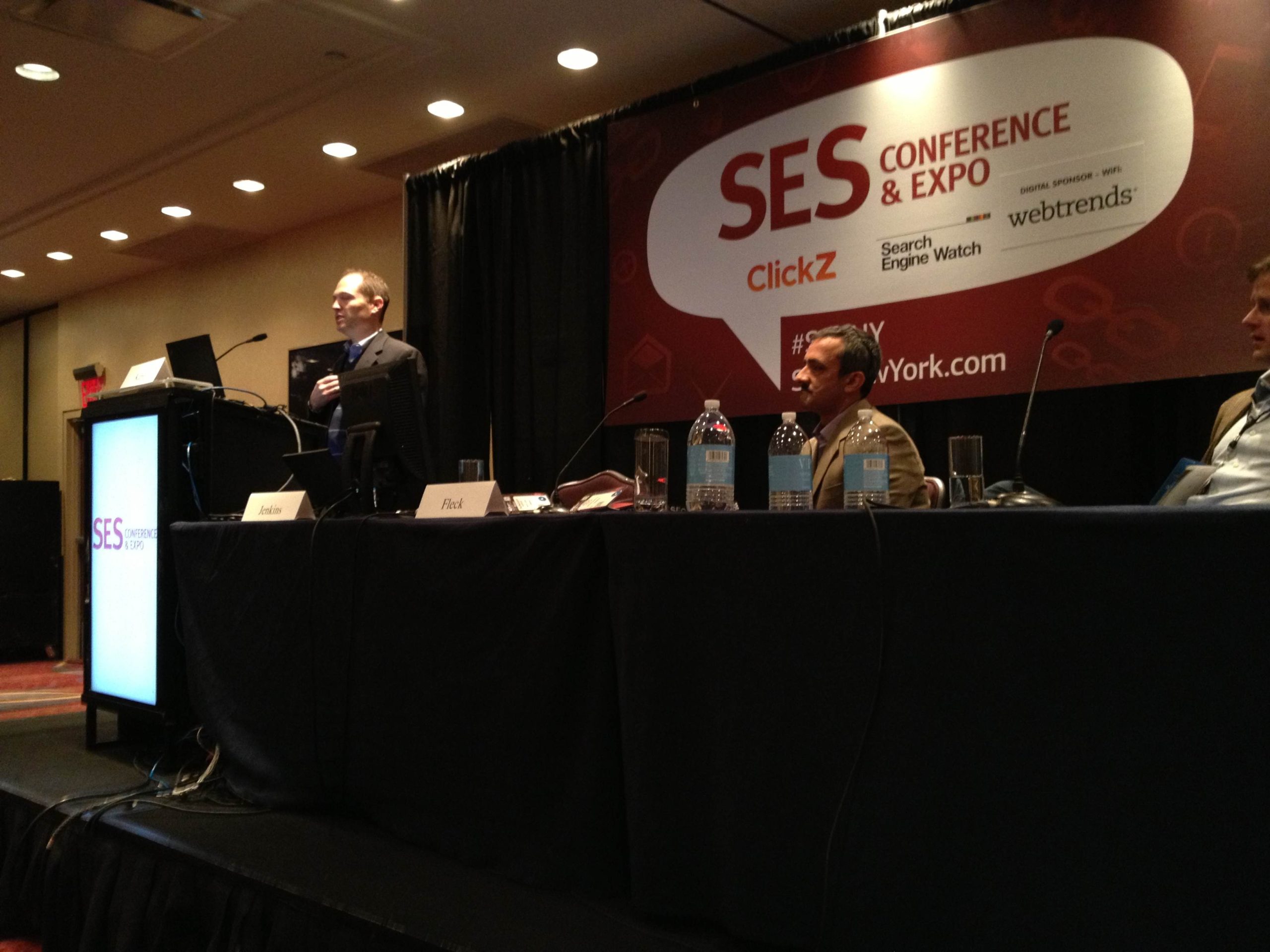So, the new email inbox is now mobile. What does this mean? Connected consumers – the people with smartphones and tablet computers – check their email accounts more often and, in some cases, exclusively from these devices.
In a joint presentation between Responsys’ VP of Strategic Services Richard Fleck and BrightWave Marketing’s CEO Simms Jenkins, the two spoke about how the changing email landscape must evolve to consider mobile and social access points. Each speaker touched on different aspects of email’s evolution, providing SES New York attendees insights they can implement immediately into their own email and internet marketing strategies.
Digital media raises expectations for quality interactions
Today’s savvy consumer expects a coordinated cross-channel experience, Fleck noted. Brands may start their consumer engagement projects with email, but they must follow through with mobile, social media and display marketing initiatives to keep leads active. Fortunately, email response data and analytics offer marketers robust tools that help them understand how channels perform. With a little A/B testing and market research, brands can use last week’s insight to inspire next week’s email content.
With a little A/B testing and market research, brands can use last week’s insight to inspire next week’s email content.
Fleck asked the audience about how they segment their email prospects – “When you look at your new subscribers, active leads and at-risk prospects, do you understand how your email engagement performs long term?” He continues, “Are they engaged elsewhere, so you can connect the dots and bring inactive audiences back into the mix? Connecting through social can be the solution.”
It’s important for all marketers – not just those interested in improving their email programs – to understand who their ideal customers are and work hard to learn more about their core motivations, behaviors and online activities. Fleck referred to this task as the, “know-me, engage-me brand-to-consumer component.” Through data mining and market research, along with targeted display ads and social media content that encourage interactions, email marketers can gain a clearer idea of how to get the RIGHT message in front of the IDEAL customer.
“What started as an email journey often evolves into a cross-channel experience to connect the dots and understand more about prospects,” Fleck noted. What does this mean, exactly? While you might spark conversation with a customer through email initially, you must advance your relationship with said person by analyzing how she responds to your media, and then approaching her again from several touch points.
Three ideas to drive customer-led marketing online
Fleck offered three clear strategies to improve audience-responsive outreach.
1. Integrated lifecycle display – Use targeted display opportunities to sustain engagement and conversion.
2. Customer churn mitigation – Evaluate slow customer attrition with predictive churn mitigation programs and learn how to reengage active prospects before they become at-risk leads.
3. Social and email integration – Listen and analyze your leads’ social behaviors to drive more personalized marketing programs.
Mobile has changed email – just accept it, marketers
Simms Jenkins focused much of his presentation on how mobile technology continues to change email marketing. He noted, “Email is the hub of all digital messaging. It’s not the end-all be-all, but email is the glue that keeps marketing channels together. ”
“Email is the hub of all digital messaging. It’s not the end-all be-all, but email is the glue that keeps marketing channels together. ” – Simms Jenkins.
Jenkins outlined data from MarketingSherpa that showed the most common goals for email marketing resemble the leading objectives for mobile marketing. More companies plan to invest in mobile in the coming months compared to both email and social, despite email driving the highest ROI.
“Email often works when it’s done below average,” Jenkins admitted, “Just getting email out still works, but everyone should strive to improve this part of the industry.”
To get every attendee on the same page, Jenkins defined email as:
– The best direct method for connecting brands to their customers.
– A driver’s license in a hyper-connected digital world.
– Extremely cost effective.
– A great way to make money.
But before a company sees mesmerizing returns on its email investments, the business must act on ideas that matter. Jenkins offered six golden insights about email marketing for both B2Bs and B2Cs.
Rule 1: Smartphone owners are more likely to read emails than make phone calls. Recognize it’s the best way to reach mobile web audiences.
Rule 2: Mobile email has grown 138 percent year-over-year, so you need to get on board.
Rule 3: Understand how email content looks on smartphone devices. Eighty percent of people delete mobile emails if they don’t look good on their screens. How does ugly email influence brand perception? An unattractive email generates a 24 percent strongly negative perception.
Rule 4: You can’t know the right email approach if you don’t know where your customers hang out online. Look at analytics – what devices do people use to review emails?
Rule 5: Set goals – these benchmarks help determine the type of email program that will work best.
Rule 6: Device matters – Deliver the RIGHT email to the RIGHT device.
With these rules in mind, marketers will be more prepared to use email as a way to start discussions with prospects, continue meaningful chatter via social and close deals with effective display ads. Jenkins concluded his presentation with five takeaways:
1. Identify and target your mobile audience.
2. Get serious about subject lines.
3. Get smarter about content creation.
4. Design for mobile NOW.
5. Use mobile landing pages to drive conversions.
It’s important to help email marketing continue its forward progress, and these tips can aid any marketer in developing stronger promotional strategies. Stay tuned for more SES NY coverage.




